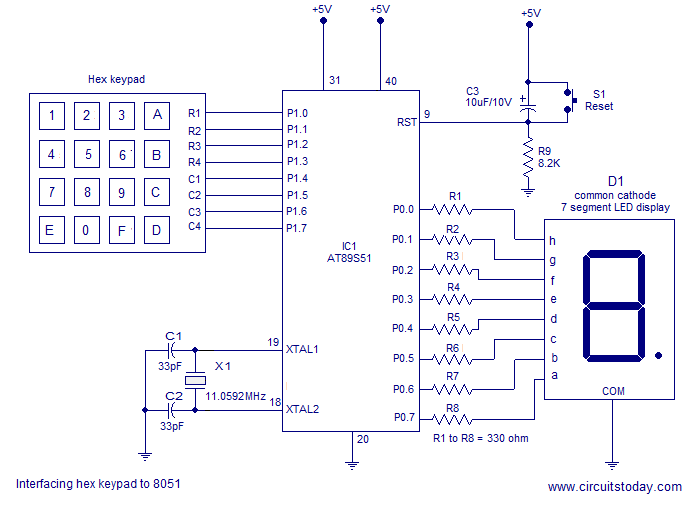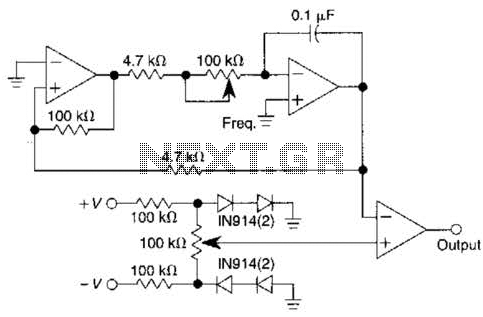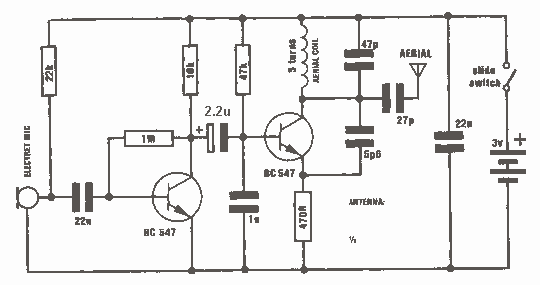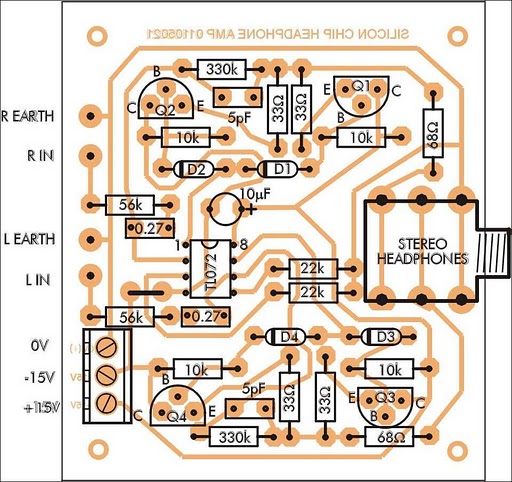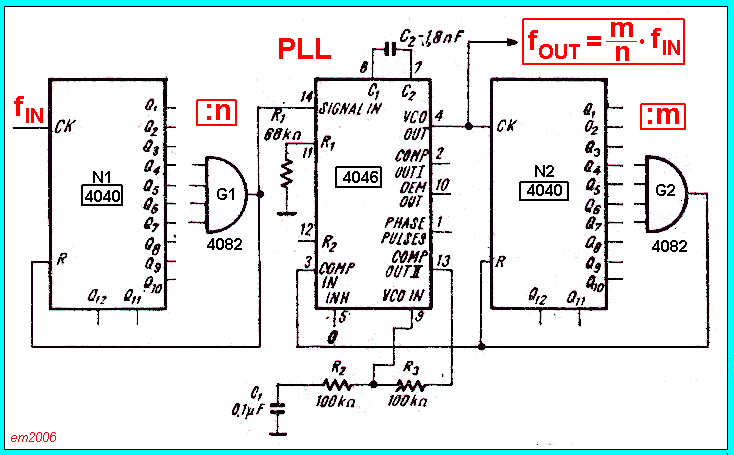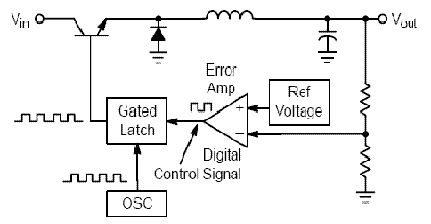
Beeper Circuit
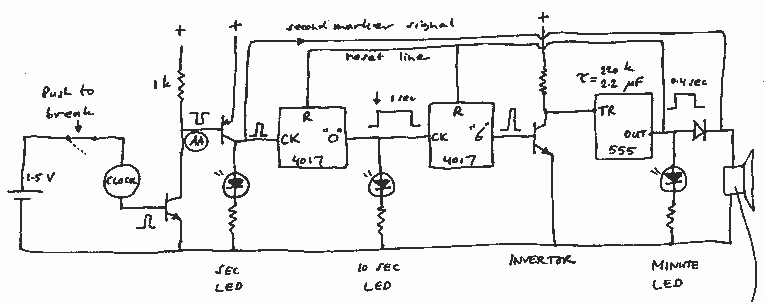
This box is a portable transfer standard to maintain and carry with you a local time signal of 59 short beeps (pips) plus a long 0.4 sec beeeeep on the full minute. At the start of the job, the box is started by manually synchronising it by ear with a reputable time signal (GPS, WWV/H, or Telstra 1194 on a fixed landline telephone). The box then keeps bleeping, can be taken to an observation site, and can be used there for an hour or so, before the time slowly drifts too far out of calibration. More: In the box is the core of an analog quartz alarm clock with a second hand, and we use the second pulses that drive the solenoid that moves the second hand. Clock quality varies but most keep time to a couple of seconds per day, which is le
This portable transfer standard operates as a time signal generator, designed to produce a consistent auditory time reference through a series of beeps. The core component of this device is an analog quartz clock mechanism, which is known for its reliability in timekeeping. The clock is equipped with a second hand, and the timing pulses that control this hand are utilized to generate the auditory signals.
The device emits a total of 60 signals each minute: 59 short beeps, followed by a long beep lasting 0.4 seconds at the full minute mark. This auditory output serves as a precise time reference for users in various observational settings. To ensure accuracy, the device must be manually synchronized at the beginning of its use. This synchronization is achieved by aligning the device with a known accurate time source, such as GPS, WWV/H, or Telstra 1194, which can be accessed via a fixed landline telephone.
Once activated, the device will continue to produce its beeping signals, making it portable and usable for approximately one hour before the timing may begin to drift. The inherent accuracy of the quartz clock mechanism allows for a timekeeping precision that typically varies within a range of a couple of seconds per day, making it suitable for applications where precise timing is essential.
The design of the device must ensure that the solenoid mechanism, responsible for generating the beeping sounds, is driven effectively by the second pulses of the clock. The integration of the solenoid with the clock's timing system is critical for maintaining the integrity of the auditory signals produced. Overall, this portable time signal generator serves as a practical tool for maintaining time accuracy in various observational scenarios.This box is a portable transfer standard to maintain and carry with you a local time signal of 59 short beeps (pips) plus a long 0.4 sec beeeeep on the full minute. At the start of the job, the box is started by manually synchronising it by ear with a reputable time signal (GPS, WWV/H, or Telstra 1194 on a fixed landline telephone).
The box then keeps bleeping, can be taken to an observation site, and can be used there for an hour or so, before the time slowly drifts too far out of calibration. In the box is the core of an analog quartz alarm clock with a second hand, and we use the second pulses that drive the solenoid that moves the second hand. Clock quality varies but most keep time to a couple of seconds per day, which is le 🔗 External reference
This portable transfer standard operates as a time signal generator, designed to produce a consistent auditory time reference through a series of beeps. The core component of this device is an analog quartz clock mechanism, which is known for its reliability in timekeeping. The clock is equipped with a second hand, and the timing pulses that control this hand are utilized to generate the auditory signals.
The device emits a total of 60 signals each minute: 59 short beeps, followed by a long beep lasting 0.4 seconds at the full minute mark. This auditory output serves as a precise time reference for users in various observational settings. To ensure accuracy, the device must be manually synchronized at the beginning of its use. This synchronization is achieved by aligning the device with a known accurate time source, such as GPS, WWV/H, or Telstra 1194, which can be accessed via a fixed landline telephone.
Once activated, the device will continue to produce its beeping signals, making it portable and usable for approximately one hour before the timing may begin to drift. The inherent accuracy of the quartz clock mechanism allows for a timekeeping precision that typically varies within a range of a couple of seconds per day, making it suitable for applications where precise timing is essential.
The design of the device must ensure that the solenoid mechanism, responsible for generating the beeping sounds, is driven effectively by the second pulses of the clock. The integration of the solenoid with the clock's timing system is critical for maintaining the integrity of the auditory signals produced. Overall, this portable time signal generator serves as a practical tool for maintaining time accuracy in various observational scenarios.This box is a portable transfer standard to maintain and carry with you a local time signal of 59 short beeps (pips) plus a long 0.4 sec beeeeep on the full minute. At the start of the job, the box is started by manually synchronising it by ear with a reputable time signal (GPS, WWV/H, or Telstra 1194 on a fixed landline telephone).
The box then keeps bleeping, can be taken to an observation site, and can be used there for an hour or so, before the time slowly drifts too far out of calibration. In the box is the core of an analog quartz alarm clock with a second hand, and we use the second pulses that drive the solenoid that moves the second hand. Clock quality varies but most keep time to a couple of seconds per day, which is le 🔗 External reference
